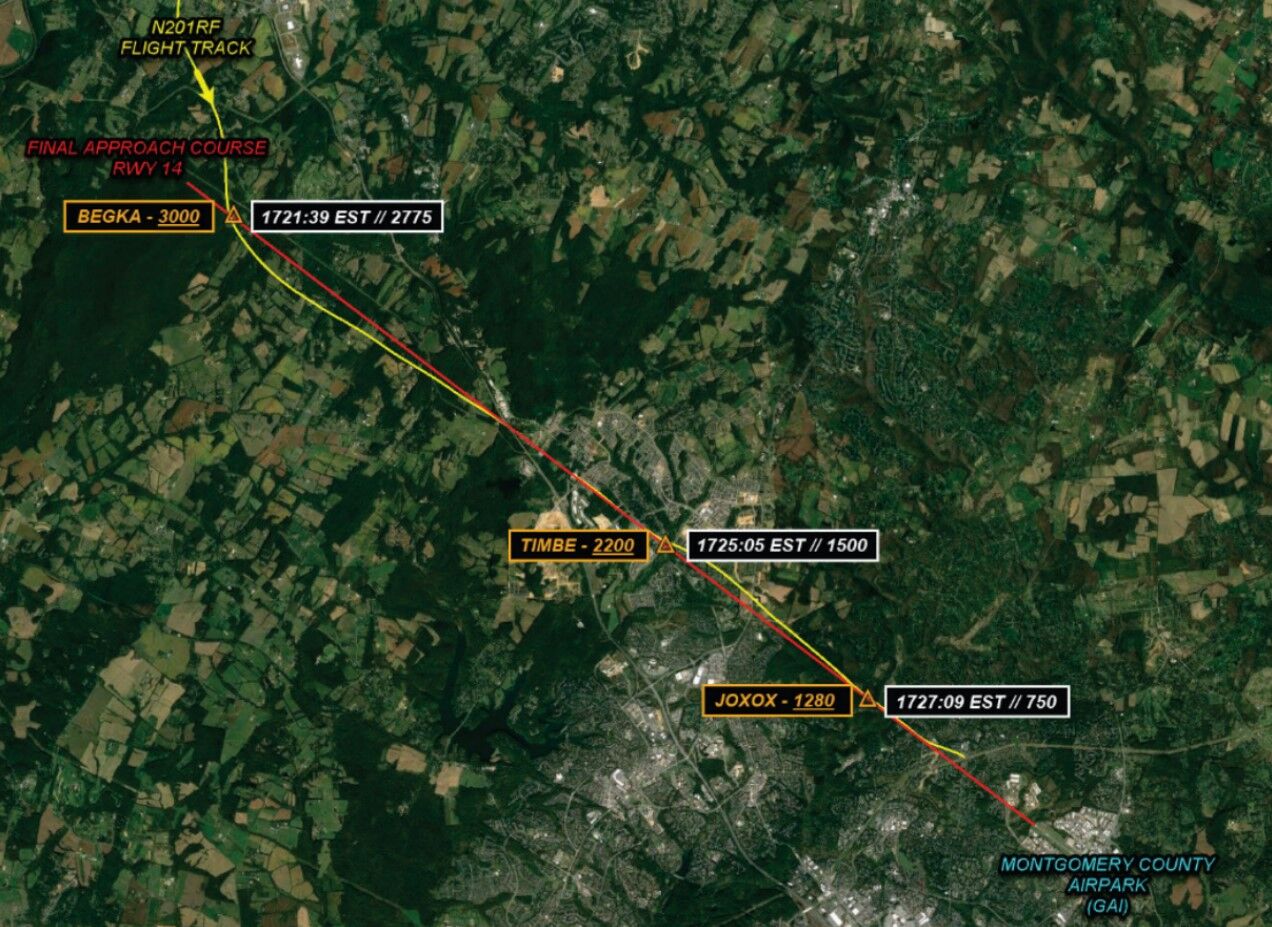A new report on the crash of a small plane into a transmission tower in Montgomery County, Maryland, last week found the pilot was having trouble navigating in dark, cloudy conditions before the crash and did not follow guidance from air traffic control.
The Nov. 27 crash near Gaithersburg caused the plane to become entangled in live power lines, knocking out power for tens of thousands, and leading to serious injuries for the two people inside the plane who were trapped for hours before they were rescued.

The conditions that night were dark and cloudy, requiring pilot Patrick Merkle, 66, to rely entirely on reference instruments, rather than visual cues, according to the preliminary report from the National Transportation Safety Board, released Monday.
Merkle told the 911 dispatcher that he was experiencing a visibility issue before the crash.
“We were looking for the airport. I descended to the minimum altitude … and apparently I got down a little bit lower than I should have,” Merkle said. “I thought I was closer to the airport than I was … We could see the ground, but we couldn’t see in front.”
An examination of the communication between air traffic control and the pilot also found that Merkle did not heed guidance from air traffic control.
Merkle was advised to expect one approach at the Montgomery County Airpark, but he preferred a different approach, the preliminary report said.
The controller gave several corrective actions for Merkle to take. However, the pilot “made a series of left and right turns, near course reversals, or continued established headings as the controller repeatedly requested that the pilot turn to a different heading,” the report said.
At one point, Merkle told air traffic control he had entered the information incorrectly and was making the correction.
When air traffic control also cleared him for an approach to the airport, the airplane turned 100 degrees to its right.
The controller then instructed Merkle to proceed to the Maryland airport but the airplane was flying too low, the report showed.
“He got too low, at that point, in the approach” and he was “below the minimum altitude for that runway,” said WTOP’s Dan Ronan, who has a commercial pilot’s license and is a transportation expert.
Ronan said the pilot was flying in really difficult and challenging conditions.
The report indicated, Ronan said, that the pilot was having some difficulty with the navigation phase of the flight, about an hour before the crash.
Coupled with that was the deteriorating visibility. Another airplane approaching the airport communicated that visibility was “below minimal and requested a diversion to another airport,” the report said.
Ronan said the report is a statement of facts and not the type that draws conclusions.
It took several hours to rescue Merkle, of D.C., and passenger Janet Williams, 66, of Louisiana, who were trapped 100 feet above ground.
“For the first couple hours, I wasn’t sure that hanging on that tower was going to work, I was very concerned that we might be sliding off the tower and to our deaths, actually,” Merkle told WTOP.
Merkle made the first 911 call from the cellphone while the plane was suspended in the air, and call-takers were in constant contact with the occupants during the nearly eight-hour ordeal.
The crash left tens of thousands of homes and businesses without power for several hours.
WTOP’s Jack Moore contributed to this report.








